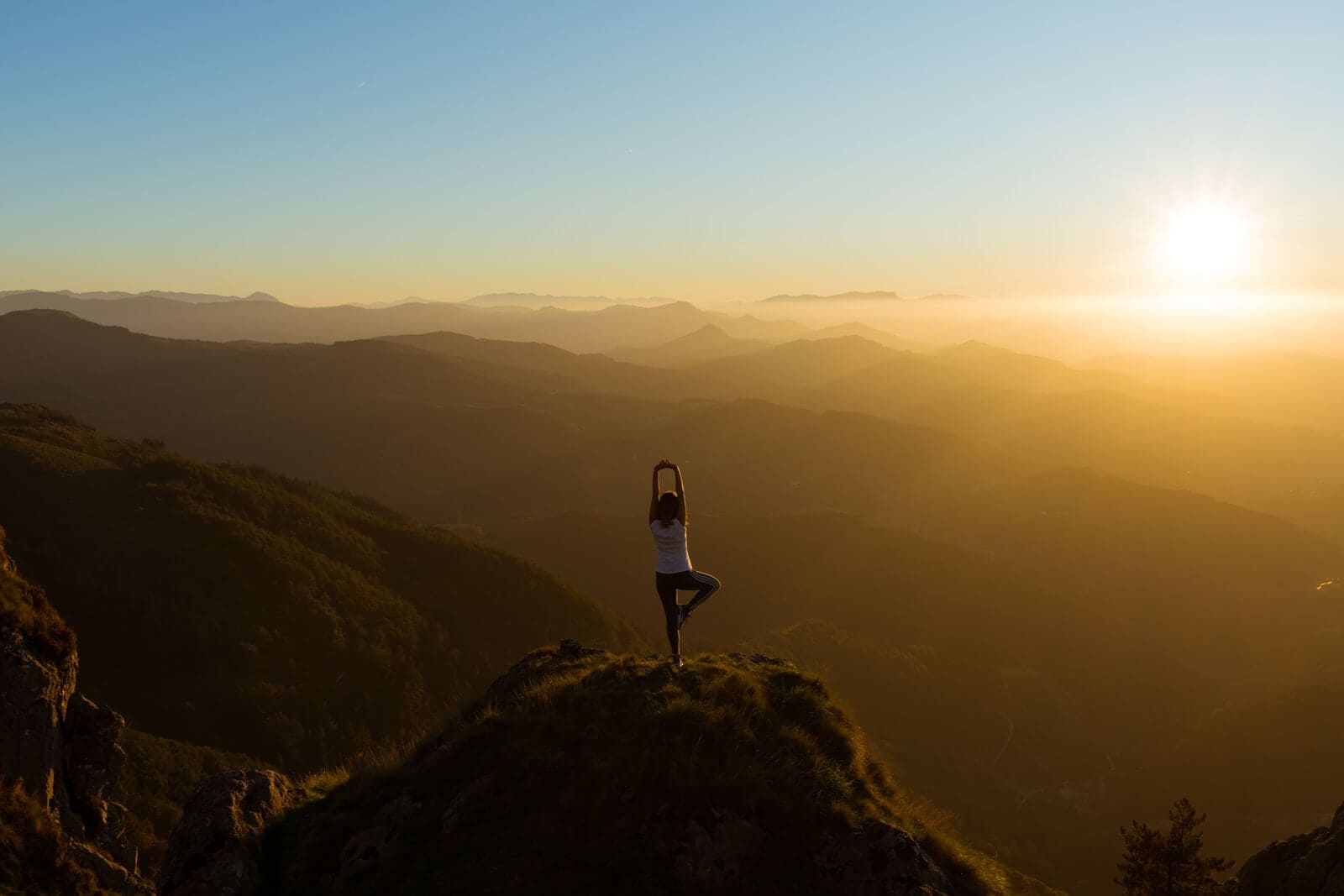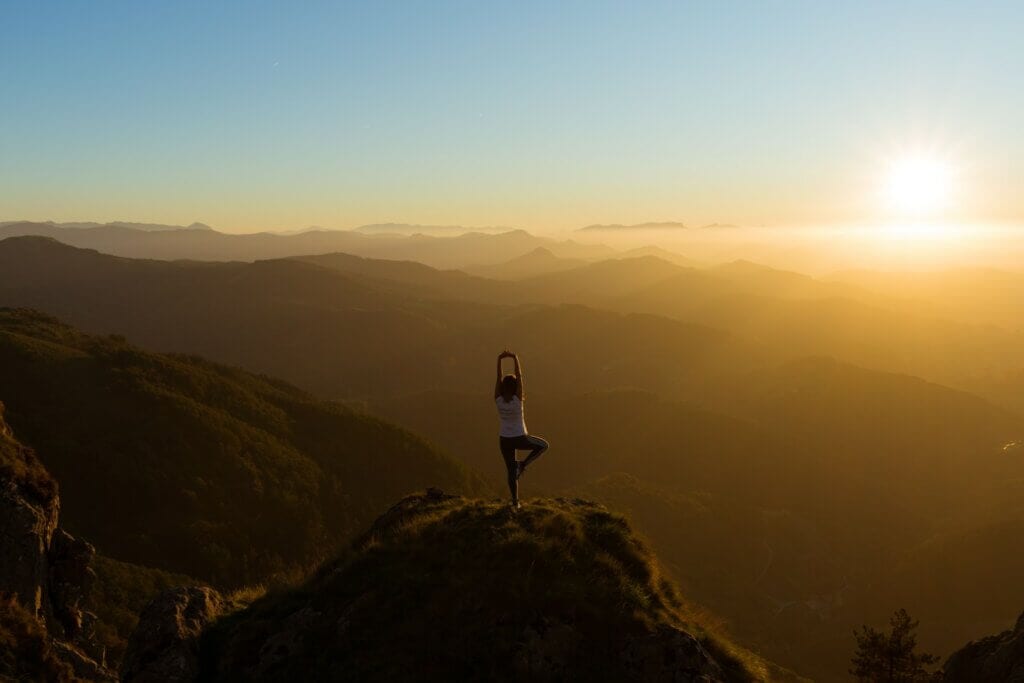Balance is not something we think much about in our daily lives, but as we age, it becomes incredibly important to have good balance to prevent falls and injuries. Improved balance can also help in your yoga practice, in other physical activities, and in daily life.
The problem is improving balance can be a bit of a catch-22. You struggle to balance so the postures are frustrating, but if you don’t practice those postures, your balance will never improve. Practicing the postures on your own can be a bit daunting. This free 30 Day Yoga Challenge will support you and help you find balance and strength, so you can feel grounded while you fly!
Standing Yoga Poses to Improve Balance
1. Tadasana (Mountain Pose)
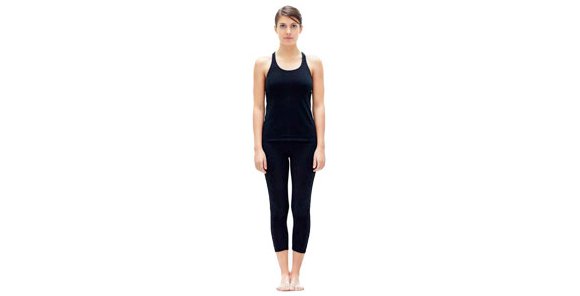
It may not seem like much more than standing, but Tadasana is a great way to find your balance. By feeling where your weight is balanced on your feet and elongating your spine, you will improve your posture which, in turn, improves your balance.
You can also get even more balancing benefits out of the pose by doing it with your eyes closed.
2. Vrksasana (Tree Pose)
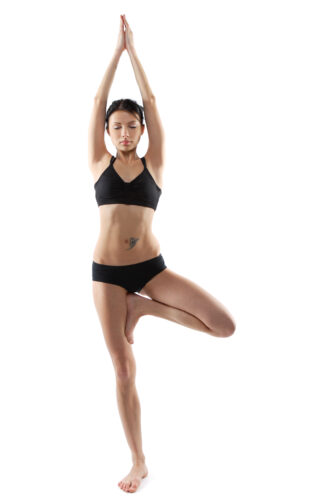
The key to getting the most out of this is really paying attention to every part of your body.
Start at the ground and feel where weight is concentrated on your standing foot. Now move up your standing leg and feel the muscles engaged with a micro-bend in your knee. Notice where your hips and pelvis are? Are they level and tucked under slightly or is one side sticking out?
Make sure your spine is straight and your shoulders and head continue along that straight line. You can also challenge yourself by changing the position of your arms or even closing your eyes.
3. Utthita Hasta Padangusthasana (Extended Hand-to-Big-Toe Pose)
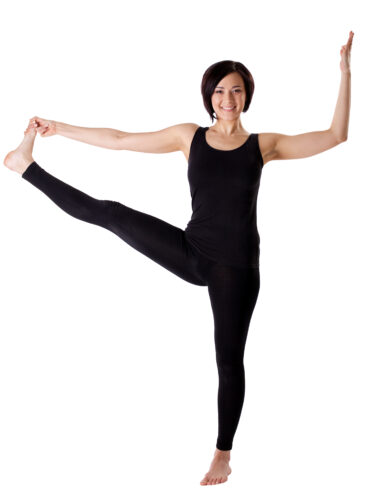
It’s not easy, but this posture will help you notice where your weight is and help you make sure your hips are in line and your body is straight. If your hip is jutted out or your butt is too far back, you’ll lose your balance.
But when you get it right and can balance, you’ll see how your body should be aligned to stay strong. If reaching your toe is too challenging, you can still get the benefits of this pose by keeping your leg bent and holding on to your knee.
4. Natarajasana (Dancer Pose)
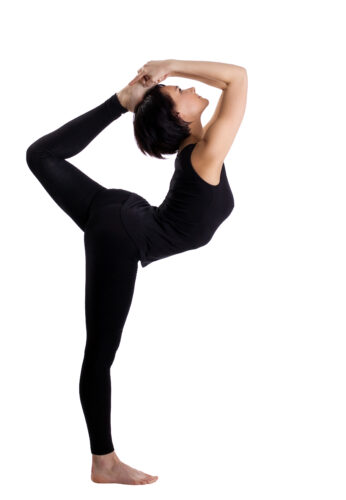
When done well, it looks effortless, but Dancer Pose not only requires balance but also requires strength, which is important for balance. The pose works the muscles of the back, legs and core.
Additionally, to do Dancer Pose successfully requires keeping your hips squared and facing forward and also making sure that one is not higher than the other. This strength and proper hip alignment are both useful in improving balance in the long term.
5. Virabhadrasana III (Warrior III)
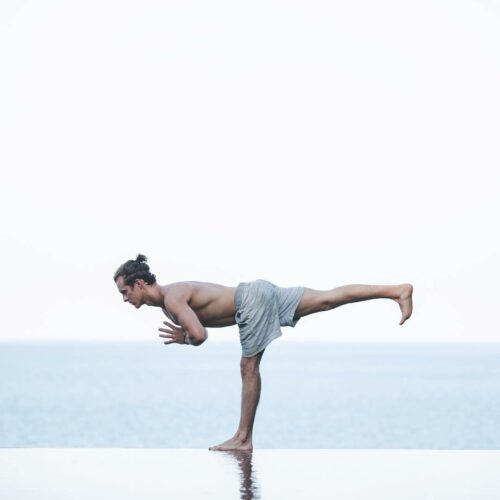
This challenging balancing pose requires the engagement of not only the standing leg, but the entire back body, including the shoulders, back, buttocks, and legs.
On top of that, the only way to successfully hold the pose is by feeling the body lengthen from fingertips to the sole of your foot and by knowing exactly where your hips are and making sure they’re on a square plane.
While you may not replicate this pose in your daily life, it will help you balance better when you’re standing upright.
6. Ardha Chandrasana (Half Moon Pose)

The interesting thing about Half Moon is that it’s similar to standing, but it’s like you’re doing it while floating on your side.
What this means is that when you’re in Half Moon, your body should be in a straight line, beginning with your foot flexed as if it’s pressing against the wall or the floor, your hips and shoulders should be stacked facing the wall and your entire body should be elongated all the way to the top of your head.
If you can do this while balancing on one foot, you’ll improve your balance standing and walking.
Balancing postures can be challenging, but allow yourself to have fun with them, because when you master them, it’s pretty awesome. And remember, wherever you are in your practice is perfect, and the more you practice the easier the postures will be. Happy balancing!
What Are Standing Asanas?
Also referred to as standing yoga poses, standing asanas help create lower body flexibility, strengthen the legs and core, and create greater balance in the body. A building block of a yoga asana practice, standing poses are an excellent way to target muscle groups of the lower body while maintaining safety in alignment.
How To Improve Balance In Yoga?
- Lock your gaze. Focus your eyes on one still point and keep your gaze locked to help maintain your balance.
- Stabilize your core. draw the pit of your belly in toward your spine to stabilize your core.
- Establish your foundation. Press your foot firmly against your standing leg and use the same amount of energy to press that leg into your raised foot. Let these forces equally oppose each other.
- Connect with your breath. Breathe deeply into all of the openings that you’re creating. And, when you’re ready, slowly release and repeat on the opposite side.
